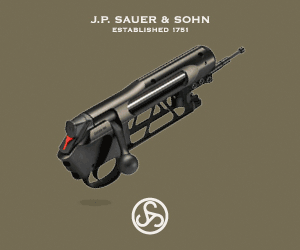Guten Tag alle miteinander , bin neu in diesem Kreise unerschöflicher Wissensquellen und heisse FERNSICHT , wie bei EGUN
Ein netter und qualifizierter Fachmann (ja, die gibt es wirklich) hat mich netterwiese auf diese Beiträge hingewiesen.
Ich möchte keinem der verehrten .17-Rem-Fachleute zu nahe treten , bin aber mal neugierig . Wer von den anwesenden Spezialisten schiesst selbst eine .17 Remington , serienmässig aus der Kramkiste oder eine Customwaffe , noch jemand der sich mit der Ballistik der .17 Rem als Wiederlader auskennt und selbst dieses Kaliber oder ein anderes Hochrasanzkaliber schiesst und/oder lädt ?
Ballistik = Innen , Aussen und Zielballistik ?
Und wer von den Fachleuten hat schon mal einen gesehen, der einen gekannt haben soll , dessen Freund früher in der Schule einen Nachbarn hatte , der mal vorhatte, so was zu kaufen , sich aber doch bei der 8x57 geblieben ist, seit Verdun und weil die Surplusmuni so schön billig ist ?
Wer lesen kann, möge es tun:
17 Remington
One might think logically that a cartridge that's been with us since 1971, one that burns about the same amount of powder as the .222, produces about the same amount of muzzle blast as the .223, generates about the same level of recoil as the .22 Hornet, and yet shoots as flat as the .22-250, would have America's varmint shooters standing in line to buy a rifle chambered for it. Sadly enough, this has not been the case with our only domesticated .17 caliber cartridge. Despite the fact that the .17 Remington has such impressive credentials, it has never enjoyed more than mild popularity in the United States. It's largest following is in Australia where hunters who shoot fox for the fur market find the little cartridge ideal for minimal pelt damage.
With the exception of the .220 Swift, the .17 Remington generates velocities exceeding those of all other commercially loaded cartridges by a considerable margin. Such extremely high speeds result in a flat trajectory which makes 300 yard shots on varmint a snap. The banjo string trajectory plus it's excellent accuracy, even with factory loads, and almost nonexistent recoil make the .17 Remington a pleasure to carry afield. All the little cartridge asks of its owner is a good barrel cleaning every 15-20 rounds. Muzzle Jump from a rifle chambered to this cartridge is so light you can see the speedy little bullet punch a hole in paper or tumble a varmint, right inside your scope.
The exploits of the early .17s made pretty heady reading. Designed to be varmint level cartridges, the. 17s were used on a variety of big game species with reportedly "magical" results. In fact, I do know a highly successful gun maker who uses the .17 Rem. for his elk hunting. He belongs to the "One Shot-Head Shot Club," and he hangs up an elk every year plus at last count had racked up over 900 coyotes with the little .17. Having said that, the. 17s are a delight to carry afield after small game, but they're not big game cartridges by any stretch of the imagination.
There's A Lot To Like
The strong points of the .17 Rem. have been its lack of recoil and its fast stepping, thin jacketed bullets that reduce ricochets to almost zero. To anyone used to shooting the centerfires, the experience of shooting a. 17 Rem. for the first time boggles the mind. Pressing the trigger, you launch a 25-grain bullet at 4,000+ fps and actually see the bullet hit through your scope. True, other varmint cartridge combinations produce similar results but not anywhere near the sensation of the .17 Rein. or one of its wildcat kin.
When the .17 Rem. was launched, it picked up a lot of undeserved criticism about excessive metallic fouling. This may have been a legacy carried over from custom barreled wildcats. I do know that Ackley finally went to a three-groove barrel to reduce fouling; however, the .17 Rem. cartridge fired in a Remington 700 barrel doesn't foul any more than any other centerfire cartridge. In fact, I think less so. The problem may have been in the cleaning or maybe the lack thereof.
Seventeen caliber bores are small. The first thing you buy when you buy into the seventeens is a .17 caliber cleaning rod, brushes, and patches, I had to make my first one out of drill rod, but today Dewey and Bore Tech both offer excellent coated rods. The 36 inch Bore Tech rod is really too long and is a bit whippy. I favor Dewey's 11, 18 and 26 inch rods, and I would recommend you absolutely shun the use of non-coated rods in the wee, little bore.
The other rumor spread about the .17 Rem. was that it was highly wind sensitive, Looking at a petite 25-grain. 17 caliber bullet, one might intuitively reach that conclusion. but it's far from the facts. A fair comparison of wind sensitivity would be between the .17 Rem. firing a 25-grain Hornady HP with a B.C. of 0.187 at 4,000 fps and its parent. the .223 Rem. firing a 50-grain Hornady SP with a B.C. of 0.214 at 3,400 fps.
Zero them both at 200 yards, add in a 10 MPH crosswind and the .17 Rem. drifts 4.8 inches and the ,223 Rein., 5,3 inches. And drop? At 300 yards, the .223 has dropped 7 inches while the .17 Rem. has only given up 5 inches
Starting to sound interesting?
Today, we have only one factory load for the .17 Rem. It's Remington's loading featuring a 25-grain Hornady HP at 4,040 fps. Hornady formerly offered a loading, and Remington used to make its own 25-grain bullets. Now we have only Remington ammunition loaded with Hornady bullets Smells like a deal, doesn't it?
Frohes Weiterorakeln ! Sorry wenn ich hier nicht den Briefkastenonkel mache - mein Leben findet ausserhalb von WUH statt. In meinem Inserat habe ich die Möglichkeit des Probeschiessens angeboten : die Waffe kann es , die Munition auch , trotzdem aber nichts für 98er verwöhnte beduselte Grobmotoriker , die es gerade mal schaffen , die Kindersicherung einer Patronenschachtel zu überlisten !
Die kämen mit einem Skalpell auch nicht klar.
Ergo : fantastische Präzisionswaffe , aber ungeeignet für Lernunfähige und Anfänger.









